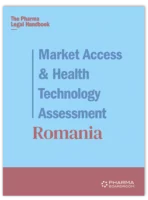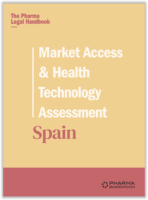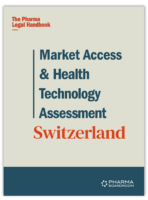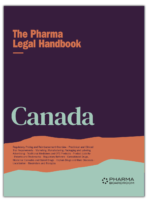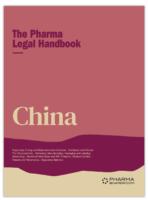HTA Dossiers
Faus Moliner Abogados / Spain
Before answering the questions in this Section VI, it is appropriate to make an important consideration. In Spain, at least up to the date of this publication, the HTA evaluation is carried out by public authorities, without the industry having to provide a specific HTA dossier with pharmacoeconomic studies of its product.
Once the process has started (which we will detail in the following questions), the company that owns the product (and other relevant stakeholders) have the right to present “allegations” to the TPR draft. And at this point, they can provide studies to support their position. But there is no HTA dossier submission at the very beginning of the HTA process.
The Advisory Board of the NHS (“CAPF”) has issued several reports in favour of changing the current model and increasing the role of the industry in the HTA process (always preserving, the public authorities right to review the work done by the industry and to perform its own HTA assessments)[1].
1. Have local authorities published recommendations surrounding value assessment dossiers? (If yes please add link)
The most relevant non-binding recommendations for performing pharmacoeconomic evaluation and budget impact analysis are the GENESIS’s guidelines[2] mentioned in the prior Section. The SOP for TPRs[3], and a Q&A prepared by the MOH[4] may also be useful for such purposes.
2. Have local Authorities published guidelines surrounding value assessment dossiers? (If yes please add link)
The most relevant non-binding guidelines for performing pharmacoeconomic evaluation and budget impact analysis are the GENESIS’s guidelines[5] mentioned in the prior Section. The SOP for TPRs[6], and a Q&A prepared by the MOH[7] may also be useful for such purposes.
3. Have local authorities published official guidelines surrounding the submission of value assessment dossiers? (If yes please add a link)
Two considerations shall be made prior to answering this question. First, as discussed in the beginning of this Section, there is no formal HTA dossier submission in Spain. Second, as pointed out in Question 3 (Section II), the main document governing HTA in Spain (i.e., the Plan to Consolidate TPRs) have been annulled by the Spanish National High Court. This means that, as of today, there is a lot of uncertainty as to how HTA assessments will be done in the future.
Be it as it may, until the date of publication of this guide, the main steps of the HTA process in Spain were as follows:
- Positive opinion of the Committee for Medicinal Products for Human Use (CHMP).
- The Coordination Group of REVALMED establishes a priority order of the medicinal products with a positive CHMP opinion. The prioritization criteria include, among others, covering an unmet therapeutic need or having a better clinical benefit or safety profile with respect to therapeutic alternatives.
- First draft of the TPR. The different groups (including the Therapeutic and the Pharmacoeconomic groups and the Evaluation Nodes) (see Question 3, Section II) prepare the first draft of the TPR. This first draft is approved by the Coordinating Group.
- Allegations of relevant stakeholders (including scientific societies, patients’ associations and the MAH) to the first draft of the TPR.
- Review of the allegations by the relevant groups and approval of the so-called Phase II TPR which may or may not include the proposals of the relevant stakeholders. The Phase II TPR is disclosed and published at the AEMPS’ website. The Phase II TPR is the one that is used for the DGCC to prepare the Associated Report for the CIPM. It is, therefore, the HTA report that has an impact on P&R decisions.
- After the P&R ruling, the TPR should be adapted including the price of the medicinal product. This is the Phase III TPR.
4. Describe the overall process of preparing and submitting a HTA dossier in your country.
As discussed, the nationwide HTA assessment for medicinal products in Spain is included in the TPR. Until the date of publication of this guide, TPRs include all or part of the following content:
- The title of the TPR shall include the name of the medicinal product and the clinical indication evaluated.
- The introduction shall clearly and precisely state the indication for which the product has been authorized and shall contain two parts: description of the health problem and current treatment. The introduction section also includes information about the following very relevant aspects: patient groups that may benefit the most from the treatment, comparators, treatment objective, relevant clinical variables as well as the threshold of clinical relevance in those cases in which a commonly accepted threshold is available.
- Description of the medicinal product. It should include the name of the active ingredient (trade name) and a brief introduction of the new product (therapeutic indication, presentation, dosage and pharmaceutical forms). It may also include aspects of the administration or duration of the treatment and relevant aspects of the authorization (for example, if it is a new medicinal product or a new indication, if the medicinal product has been designated orphan, if it has conditional or exceptional authorization, if it is conditioned to the results of new studies, etc.).
- Data from studies, including pivotal studies with active comparator, mainly the reference standard in clinical practice, and variables suitable for positioning the product will be prioritized for establishing the therapeutic position of the medicinal product.
- This section should follow a similar approach than the “Efficacy” section.
- Clinical benefit assessment and relevance for clinical practice. The objective is to assess whether the magnitude of the treatment effect is of clinical relevance, whether equivalent therapeutic alternatives exist, etc.
- Economic evaluation. The inclusion of this section in the TPRs has been questioned by the Spanish National High Court Judgment. Please refer to Q3 Section II for further information.
- The discussion section should lay the foundations for the conclusion of the report, establishing the argumentative thread that leads to the positioning of the medicinal product.
- Based on the discussion section, this section should establish the contribution of the product for the entire indication or for different subpopulations of the indication. The objective is to position the product as precisely as possible, based on the criteria of efficacy, safety and efficiency and its comparison with available alternatives.
- Therapeutic positioning. This is established after the P&R ruling.
- Bibliography.
- Expert group. The TPR should be signed by the different bodies that have taken part in the evaluation. The MAH, Scientific Societies and Patient Associations that have been contacted during the procedure shall be mentioned as well.
Finally, please note that the above structure of the TPR is included in the SOP for TPRs[8], and that the legal status of such SOP has been indirectly questioned since it represents a direct development of the Plan to Consolidate TPRs, which is currently under legal dispute. Please refer to Q3 (Section II) above for further reference.
5. Which are the questions to focus on when preparing a HTA dossier in your country?
TPRs usually follow the so-called “PICO” Process. PICO is a mnemonic used to describe the four main elements of the process which are: Population/patients (P): health problem and patient population to which it is to be applied; Intervention (I): medicinal product/therapy assessed; Comparators (C); and Outcome (O): relevant clinical variables.
6. Which are the questions to focus on when preparing a HTA dossier in your country?
In our experience, the key elements of the HTA assessment usually revolve around the selection of comparators, the relevant clinical variables and the thresholds of clinical relevance. Such issues should be carefully assessed by companies in order to be able to provide clear studies and documentation to the authorities supporting its view.
[1] Accessible at: https://www.sanidad.gob.es/profesionales/farmacia/Comite_Asesor_PFSNS.htm
[2] Accessible at: https://gruposdetrabajo.sefh.es/genesis/genesis/Documents/GUIA_EE_IP_GENESIS-SEFH_19_01_2017.pdf
[3] Accessible at: https://www.sanidad.gob.es/profesionales/farmacia/IPT/home.htm
[4] Accessible at: https://www.sanidad.gob.es/profesionales/farmacia/IPT/home.htm
[5] Accessible at: https://gruposdetrabajo.sefh.es/genesis/genesis/Documents/GUIA_EE_IP_GENESIS-SEFH_19_01_2017.pdf
[6] Accessible at: https://www.sanidad.gob.es/profesionales/farmacia/IPT/home.htm
[7] Accessible at: https://www.sanidad.gob.es/profesionales/farmacia/IPT/home.htm
[8] See Section 2 of the SOP for TPRs available at: https://www.sanidad.gob.es/en/profesionales/farmacia/IPT/home.htm










